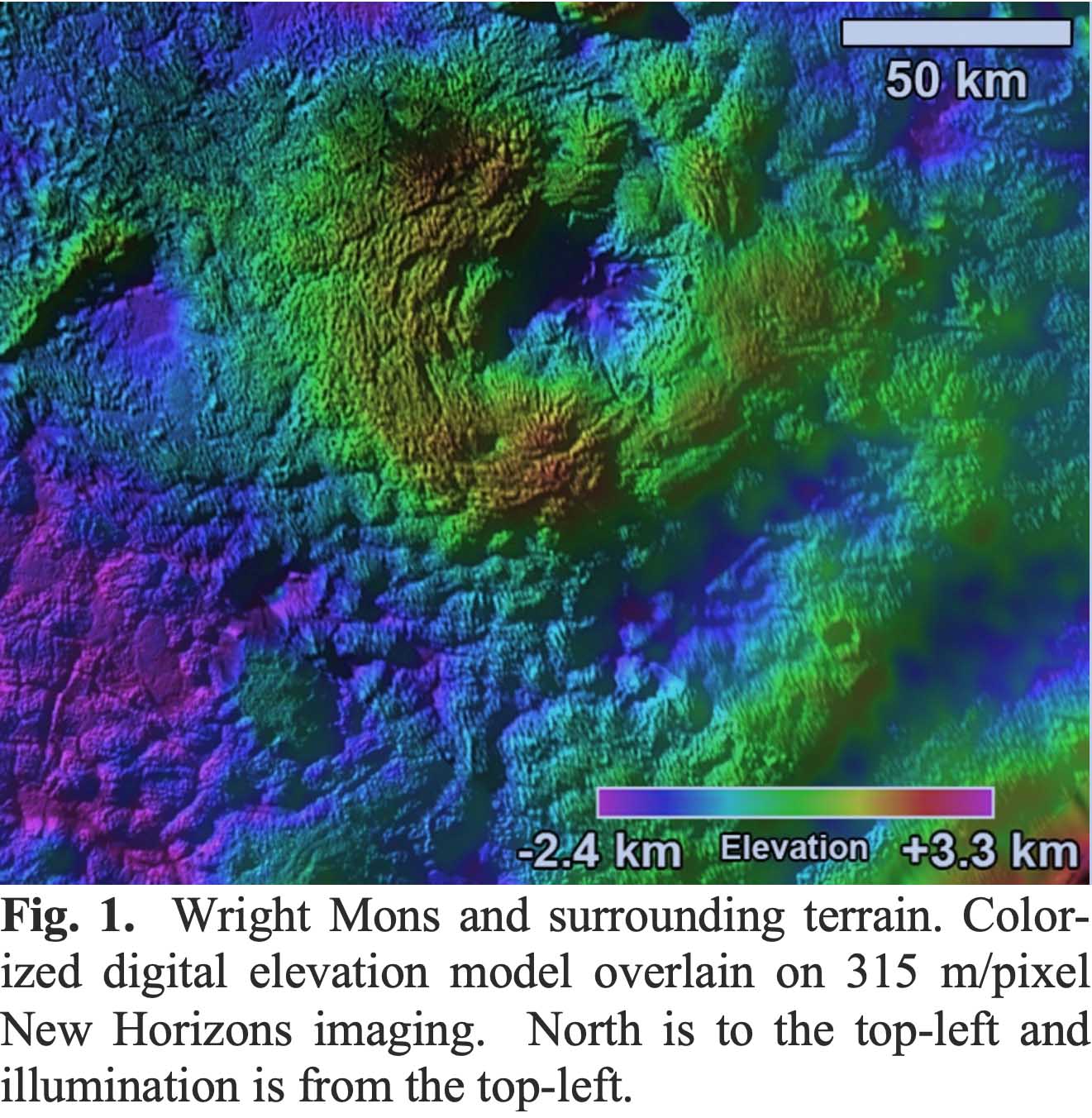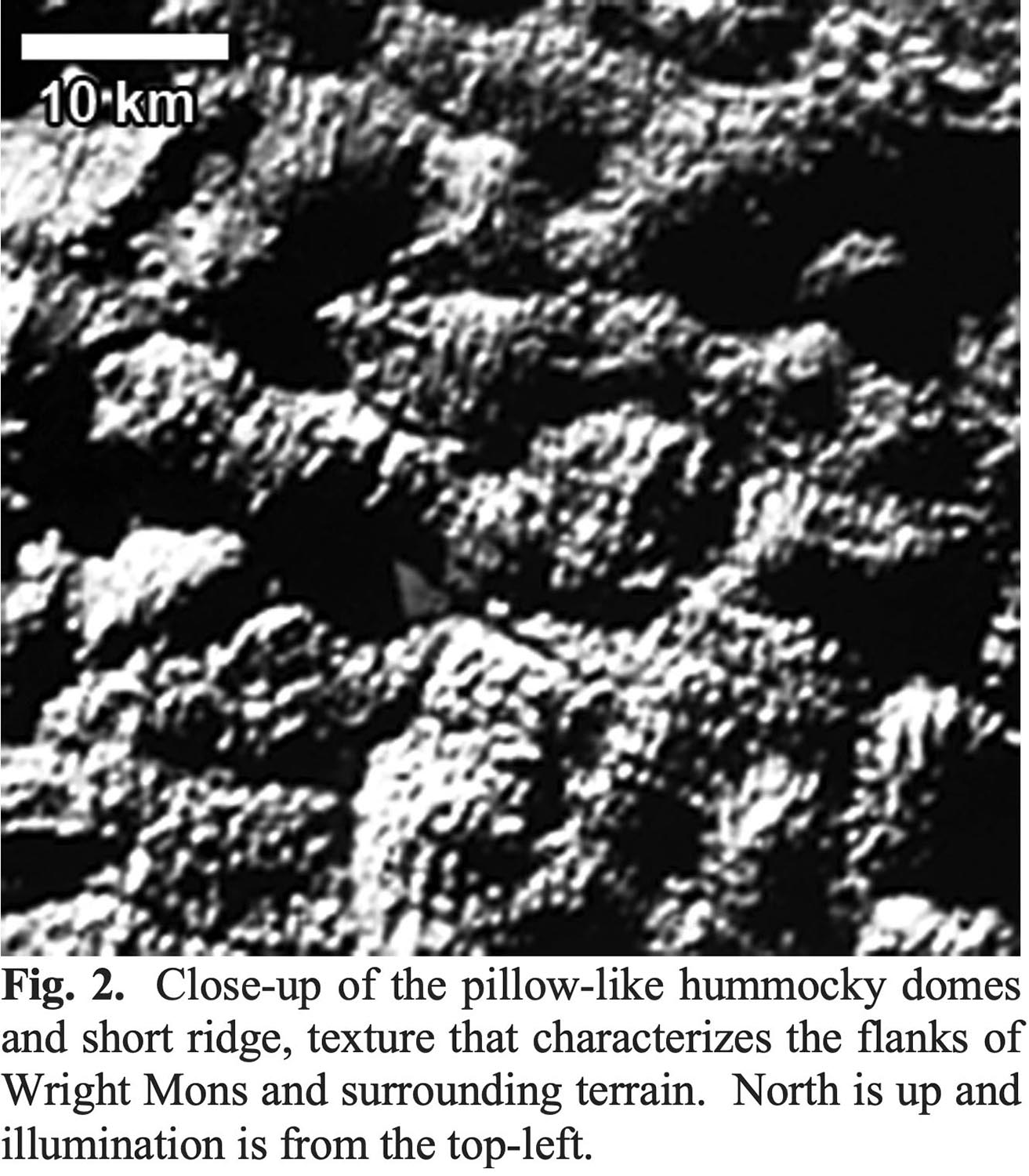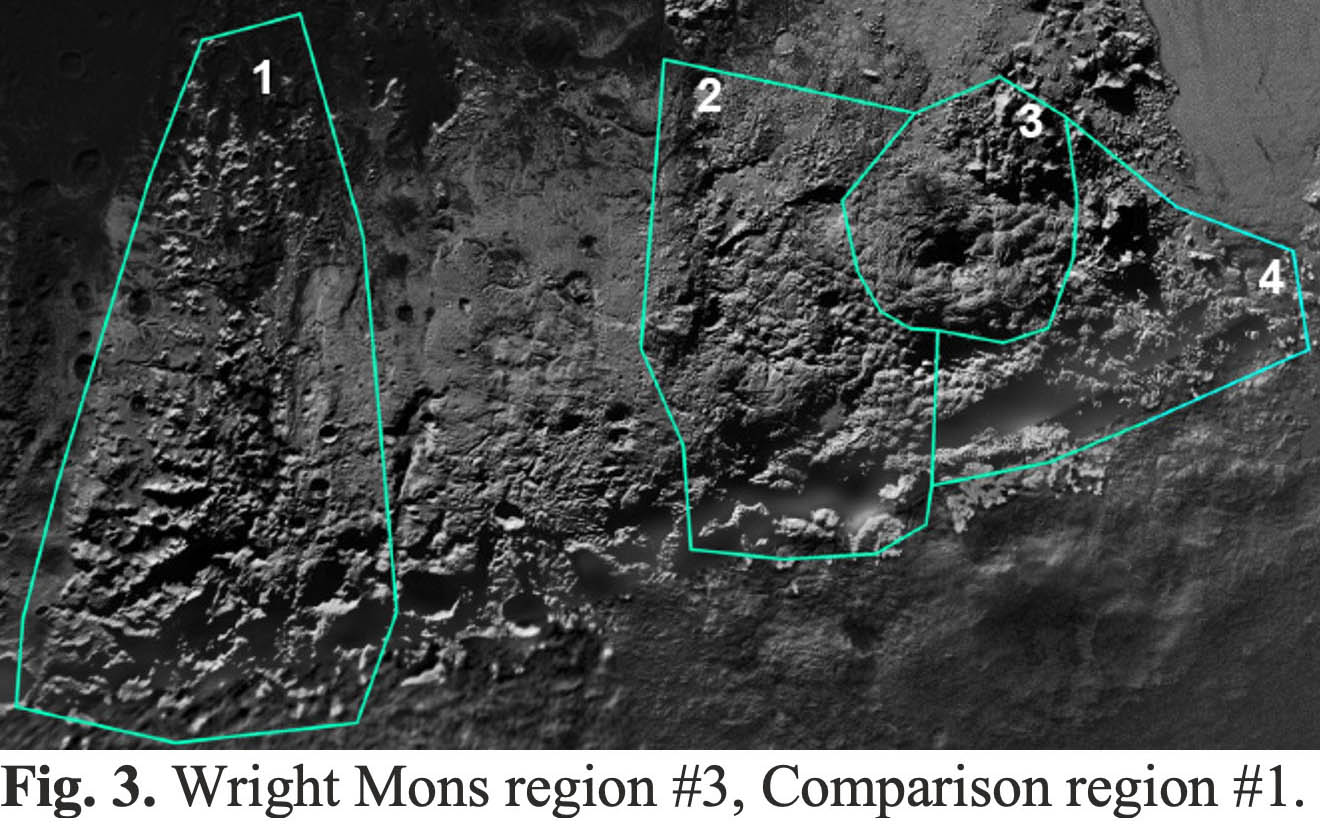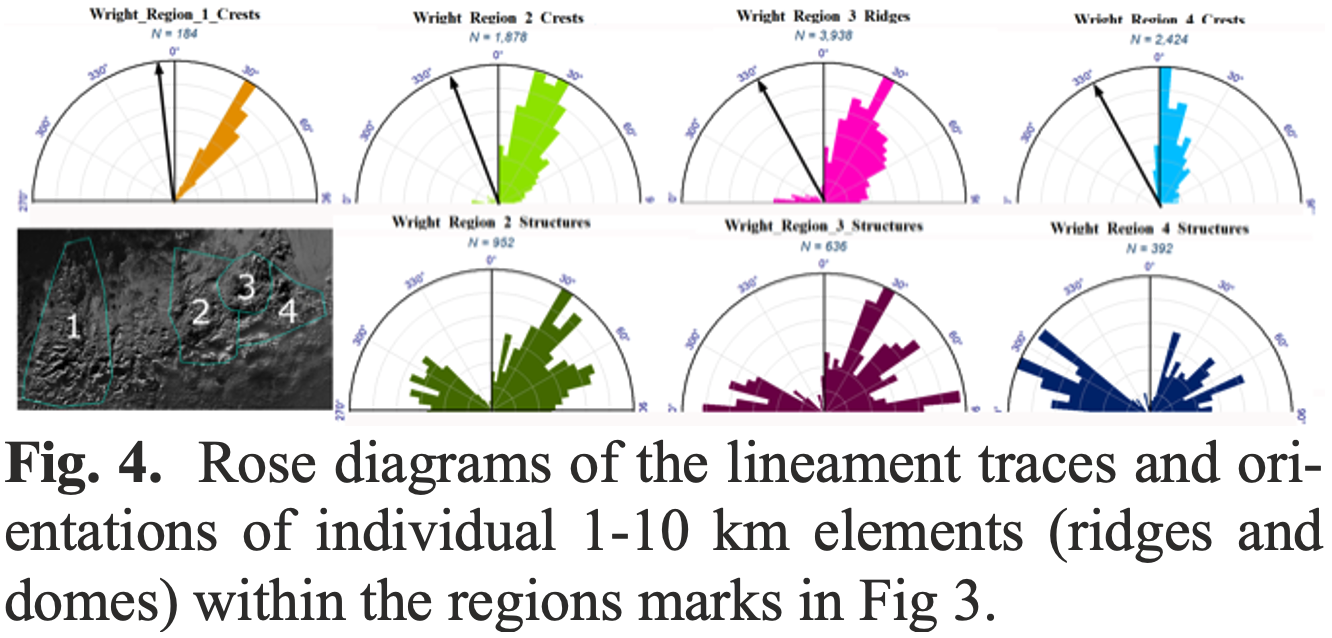- 1NASA Ames Research Center, Moffett Field, United States of America (jeff.moore@nasa.gov)
- 2Planetary Science Institute, Tucson
- 3SETI Institute, Mountain View, CA
- 4Southwest Research Institute, Boulder, CO
- 5Lunar and Planetary Institute, Houston, TX
Introduction: The Wright Mons region of Pluto remains one of the most intriguing and enigmatic landscapes on the planet. Wright Mons is a large mountain ~150 km across that rises ~4 km above its surroundings, sports a central depression that is ~45 km across and ~4 km deep, and was tentatively assigned a cryovolcanic origin immediately following the New Horizons encounter in 2015 (Fig. 1) [1,2,3]. But the absence of obvious lateral flow features and the lack of unambiguously diagnostic characteristics of calderas or vents within the central depression have challenged the development of specific formation hypotheses. The pervasive cover of pillow-like hummocks, typically 7-20 km across, on the flanks and surroundings of Wright Mons have naturally figured into various working explanations for the formation of this region (Fig. 2). Individual hummocks themselves are covered by a km-scale blocky (or coalescing short ridge) texture. The similarity in size and shape of the convex hummocks and the style of their organization, such as forming a vaguely concentric fabric near the summit, potentially lend themselves to an endogenic origin.


Observations: We mapped out the lineament traces and orientations of individual 1-10 km elements to evaluate any emerging patterns that might indicate which process may have been involved with their formation. First we mapped lineaments in 3 regions on and around Wright Mons then a separate set some distance from the Mons to look for variation (Fig. 3). A rose diagram (Fig 4) shows the plots of these orientations by region. Some generalities can be noted: 1. Ridges in Regions 1, 2 & 3 dominantly trend along a 30˚-210˚ axis (relative to 0˚N). Ridges in Region 4 trend nearly N-S, similar to the Bladed Terrain. 2. In Regions 2 and 3 there is a strong structural orientation trend parallel to the mapped ridges. 3. In Regions 2-4 there are numerous structures along trends within +/-45˚ of E-W. 4. Both ridges and structures are absent within +/-20˚ of the direction of Solar illumination. This is probably partly due to lack of discernability, but the visible ridges are too long and too parallel to be an artifact of illumination of random topography.


One possibility is that the ridges are simply high points between structural depressions. This would imply an erosional origin of the ridges as less eroded remnants between weathered and eroded fractures. It is uncertain what weathering and erosional processes would operate on Pluto. The lateral scale of the ridges would depend upon thickness of the surface unit and generally implies an underlying deformable unit and extensional tectonics. Other possible mechanisms forming aligned ridges: 1. Constructional, with scales dependent, perhaps, on atmospheric conditions (boundary layer thickness, wave structures). 2. Constructional or erosional with size and spacing due to sublimation or condensation length scales. 3. Formation as transverse dunes (e.g, parallel ridges in the north polar martian erg). 4. Erosional, due to thermal anomalies along fractures or weathering processes. The western margin of Region 2 has the appearance of erosional modification of an earlier deposit. 5. The ridges are primary features and the inferred structural lineations are actually primary constructional features.
All of these possible modes of origin of the topographic lineations implies a role of exogenic processes, either directly involved in construction of the domes and Mons of this region or through post-formation modification. Here we outline a possible mixed endo-exogenic origin for formation of Wright (and Piccard) Mons as well as the ~10 km scale hummocky domes and their km-scale knobby ridge texture.
Hypothesis: Perhaps the bulk of the deposits forming both the Mons and hummocky dome features were sourced by gaseous (or mixed gaseous-fluid) eruptions (gradual or episodic). Sources would include both the Mons depressions and fracture systems (many fractures are situated between domes). As gases and fluids escape, atmospheric and solar radiation processes control the deposition of the Mons and the smaller (10 km-scale) hummocky dome structures. In detail this process would involve cooling of erupted material encourages deposition by either or both of condensation on the surface or freezing in the atmosphere resulting in “snow.” Higher temperatures near sources and in depressions inhibits condensation in the center of the Mons and along fracture traces. Density currents of condensed eruptive material flow down Wright and Piccard Mons, forming the pronounced topographic structures. The density currents are not envisioned to be catastrophic, avalanching events. The km-scale knobby ridges are formed either during deposition or subsequently by sublimation as influenced by solar radiation – but the NNE-SSW dominant orientation remains an enigma. Perhaps this reflects the prevailing regional wind direction at the time of emplacement.
References: [1] Moore J. M. et al. (2016) Science, 351, 1284-1293. [2] Schenk P. M. et al. (2018) Icarus, 314, 400-433. [3] Singer K. N. et al. (2022) Nat Commun 13, 1542-1551.
How to cite: Moore, J. M., Howard, A. D., White, O. L., Umurhan, O. M., Singer, K. N., and Schenk, P. M.: Are the Surface Textures of Pluto’s Wright Mons and its Surroundings Exogenic?, Europlanet Science Congress 2022, Granada, Spain, 18–23 Sep 2022, EPSC2022-120, https://doi.org/10.5194/epsc2022-120, 2022.

